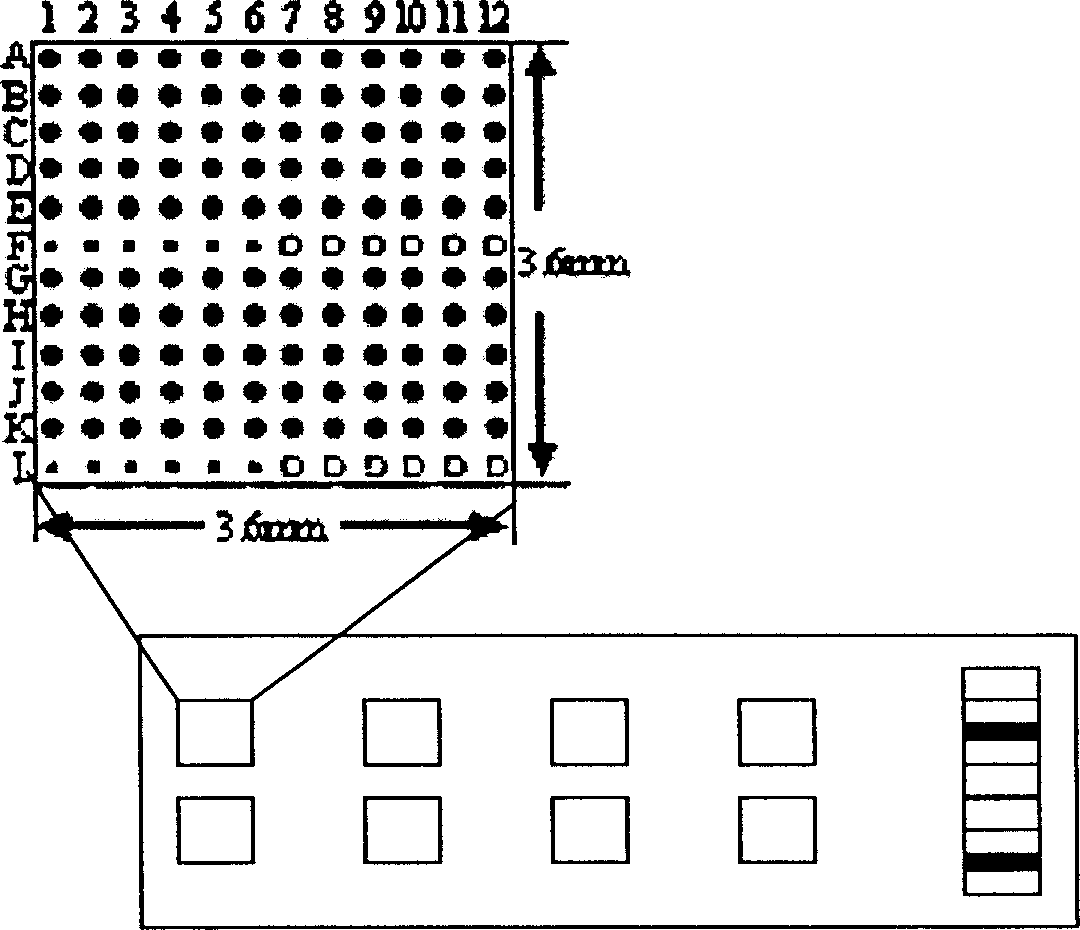Quick detection method of pathogenic microbe diagnosis type gene chip
A pathogenic microorganism and gene chip technology, which is applied in the field of rapid detection of pathogenic microorganism diagnostic gene chips, can solve the problems of establishing correlation, reducing the annealing temperature, and the hybridization time should not be too long, so as to simplify the operation steps and improve the labeling efficiency. , the effect of shortening the hybridization time
- Summary
- Abstract
- Description
- Claims
- Application Information
AI Technical Summary
Problems solved by technology
Method used
Image
Examples
Embodiment 1
[0038] This embodiment takes the HBV-DNA diagnostic chip as an example, and the detection method includes the following steps:
[0039] (1) Preparation of slides:
[0040] Take NaOH-ethanol (70gNaOH, 300mLddH 2 O, 500 mL of 95% frozen ethanol), after cleaning the slides for 2 h, washed with water several times, and then used poly-L-Lysine solution (70 mL poly-L-Lysine, 70 mL PBS for tissue culture, 600 mL ddH 2 O) Coat for 1 hour, rinse with water 5 times, dry at 45°C, and place at room temperature for two weeks for later use.
[0041] Cut coverslips into appropriate size, wash with 2% SDS for 10min, ddH 2 O rinsed, dehydrated with 100% ethanol, and then coated with silanizing agent; air-dried for later use.
[0042] (2) Probe preparation:
[0043]Primers were designed to amplify each ORF of double-stranded HBV-DNA. There were 20 genes and full-length sequences in each segment. The concentration was adjusted to 0.5 μg / μL, and the same volume of DMSO was added as the spotti...
Embodiment 2
[0071] In this example, HCV, HIV1G, and HPV16 subtype diagnostic gene chips and HBV, HDV, and HIV combined diagnostic chips were used for rapid detection. The steps are carried out according to the basic steps in Example 1. The 2× labeled PCR premix, PCR reaction system, and rapid hybridization buffer are all implemented according to the formula described in the present invention. The specific operation process is basically the same as that in Example 1, with the main differences. It is to design primer amplification probes according to different pathogen DNA, that is, to optimize the probe length, annealing temperature consistency, specificity, etc., and then take clinical samples or purified pathogen DNA to design primers, and use the markers in the present invention. Buffer for full-length labeling or specific fragment labeling. That is, different pathogens have different probes, different labeled fragments, and different PCR amplification conditions, but the formula in Exa...
PUM
 Login to View More
Login to View More Abstract
Description
Claims
Application Information
 Login to View More
Login to View More - R&D
- Intellectual Property
- Life Sciences
- Materials
- Tech Scout
- Unparalleled Data Quality
- Higher Quality Content
- 60% Fewer Hallucinations
Browse by: Latest US Patents, China's latest patents, Technical Efficacy Thesaurus, Application Domain, Technology Topic, Popular Technical Reports.
© 2025 PatSnap. All rights reserved.Legal|Privacy policy|Modern Slavery Act Transparency Statement|Sitemap|About US| Contact US: help@patsnap.com



